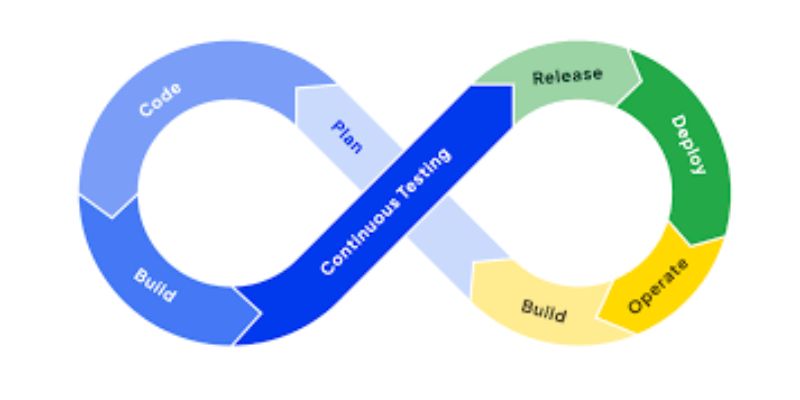
In the rapidly evolving world of software development, DevOps has become a crucial methodology for bridging the gap between development and operations teams. One of the key components of a successful DevOps implementation is continuous testing. Continuous testing involves the ongoing execution of automated tests throughout the software development lifecycle, ensuring that code changes are consistently validated. This practice helps identify defects early, reduces the risk of failures in production, and maintains high-quality software. Here, we will explore the strategies for successful continuous testing in DevOps, and how DevOps Training in Bangalore can help you master these strategies.
Understanding Continuous Testing
Continuous testing is the process of integrating automated tests into the DevOps pipeline to provide instant feedback on the health and quality of the codebase. Unlike traditional testing, which is often performed at the end of the development cycle, continuous testing is executed continuously at every stage of development, from the initial coding phase to deployment. This approach allows teams to detect and address issues as soon as they arise, fostering a culture of quality and collaboration.
Key Benefits of Continuous Testing
Before diving into the strategies, it is essential to understand the benefits of continuous testing in a DevOps environment:
- Early Defect Detection: Continuous testing helps identify defects early in the development process, reducing the cost and effort required to fix them.
- Faster Time-to-Market: By automating tests and integrating them into the CI/CD pipeline, teams can accelerate the release of high-quality software.
- Improved Collaboration: Continuous testing promotes collaboration between development, testing, and operations teams, leading to better communication and a unified approach to quality.
- Higher Quality Software: Continuous testing ensures that code changes are continuously validated, resulting in more stable and reliable software.
Strategies for Successful Continuous Testing
To achieve success with continuous testing in DevOps, consider the following strategies:
- Adopt a Shift-Left Approach
The shift-left approach involves moving testing activities earlier in the development process. By integrating testing into the early stages of development, teams can identify and address issues sooner. This can be achieved by writing unit tests alongside code, performing static code analysis, and conducting code reviews before merging changes. The earlier defects are detected, the easier and less costly they are to fix. DevOps Training in Marathahalli can help you learn how to effectively implement this approach.
- Automate Tests at All Levels
Automation is the backbone of continuous testing. To achieve comprehensive test coverage, automate tests at all levels of the testing pyramid:
– Unit Tests: Verify the functionality of individual components or functions. These tests are fast and provide quick feedback.
– Integration Tests: Ensure that different components of the application work together as expected. These tests validate the interactions between modules.
– End-to-End Tests: Simulate real-world user scenarios to validate the entire application flow. While these tests are more complex and time-consuming, they are crucial for ensuring the application’s overall functionality.
- Implement Continuous Integration and Continuous Delivery (CI/CD)
CI/CD pipelines automate the process of building, testing, and deploying code changes. Integrate automated tests into the CI/CD pipeline to ensure that every code change is automatically tested. This provides instant feedback to developers and prevents defective code from reaching production. Popular CI/CD tools like Jenkins, GitLab CI, and CircleCI can help streamline this process. Enrolling in DevOps training in Bangalore can provide you with hands-on experience in setting up and managing CI/CD pipelines.
- Use Test Containers and Virtualization
Test containers and virtualization technologies, such as Docker and Kubernetes, allow teams to create consistent and isolated test environments. These environments can be spun up quickly and destroyed after use, ensuring that tests run in a clean state every time. This approach reduces the “it works on my machine” problem and ensures that tests are reliable and repeatable.
- Adopt Service Virtualization
In complex systems, some components may not be available or feasible to test in isolation. Service virtualization allows teams to create virtual versions of these components, enabling testing of dependent systems without the need for the actual services. This approach ensures that tests can be executed even when certain services are unavailable or under development.
- Monitor and Analyze Test Results
Continuous testing generates a wealth of data that can provide valuable insights into the health of the codebase. Implement robust monitoring and analysis tools to track test results, identify trends, and detect patterns of failures. This information can help teams prioritize and address issues more effectively. Tools like Grafana, Kibana, and the ELK stack can assist in visualizing and analyzing test data.
- Foster a Culture of Continuous Improvement
Successful continuous testing requires a culture of continuous improvement. Encourage teams to learn from test results, embrace feedback, and constantly refine testing processes. Conduct regular retrospectives to identify areas for improvement and celebrate successes. By fostering a culture of quality and collaboration, teams can continuously enhance their testing practices and deliver better software. DevOps training in Bangalore can equip you with the skills to lead and contribute to such a culture.
Continuous testing is a critical component of a successful DevOps strategy. By adopting a shift-left approach, automating tests at all levels, implementing CI/CD pipelines, using test containers and service virtualization, monitoring test results, and fostering a culture of continuous improvement, organizations can achieve significant benefits. These strategies not only improve the quality and reliability of software but also accelerate time-to-market and enhance collaboration among teams. Embracing continuous testing in DevOps is a journey, but with the right approach and the right training, such as Training Institute in Bangalore, it can lead to remarkable success in delivering high-quality software.
Also Check: DevOps Interview Questions and Answers
